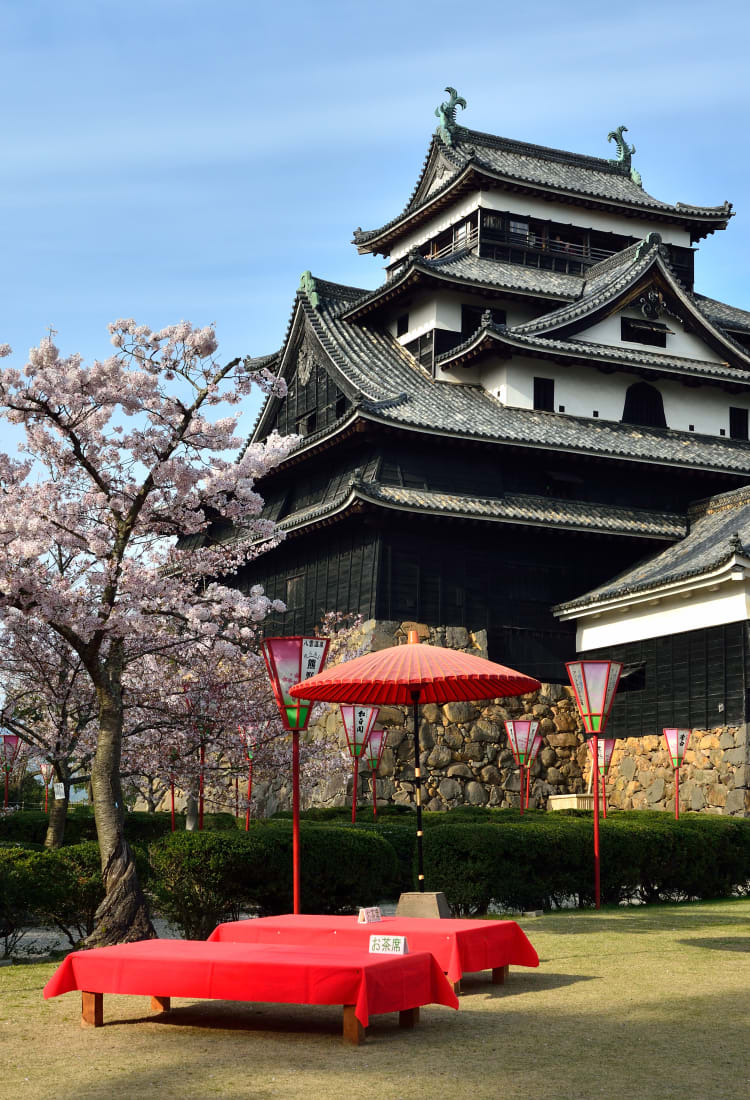Japan's earliest myths, legends, and feudal stronghold
Shimane Prefecture's largest city, Matsue is a castle town known for its place in the myths and legends related to Japan's pantheon of gods. Izumo Taisha Grand Shrine is also a place where the gods gather.
Many of Matsue's attractions are near its remarkable castle—one of just 12 in the country with an original intact keep—and can be seen in a single day. The surrounding area is packed with natural, cultural and historical sights. However, you should spend a few days exploring. Cruising Matsue's canals is another highlight.
Don't Miss
- Exploring one of only 12 original castle keeps in Japan
- The world-famous gardens of the Adachi Museum of Art
- Sunset over Lake Shinji, Japan's seventh-largest lake
How to Get There
Matsue can be reached by train, air and highway bus.
Matsue is two hours and 40 minutes by train from Okayama , where the shinkansen connects to Osaka in 50 minutes and Tokyo in three hours and 20 minutes.
The Sunrise Izumo is one of Japan's few remaining overnight sleeper trains. It travels from Tokyo to Matsue. Highway buses connect Matsue with Hiroshima and Okayama in only three hours. Highway buses run at night from Tokyo to Matsue and Izumo as well.
The two nearby airports, Izumo and Yonago, connect Matsue to Fukuoka, Tokyo, Osaka, and Nagoya.
Welcome to the "City of Water"
The town is located on the shore of Lake Shinji , the seventh-largest lake in Japan, and the river around the castle is connected to the moat. For these reasons, Matsue is known as the "City of Water." The shores of Lake Shinji offer many places of interest and plenty of hot springs, all accessible by rail.

Exploring the area by boat
Explore the canals around the samurai residence district via the Matsue Horikawa boat tour. Or view the Kaga no Kukedo sea caves with a boat tour along the coastline of nearby Shimane Peninsula.

The castle, samurai homes, and a writer who illuminated Japanese culture
The castle and surrounding samurai district contain many museums and historic sites in a compact area that you can easily explore on foot. From the top of Japan's second-largest original castle keep, you'll have a feudal lord's view of the city and surrounding area.



Matsue's most famous foreign resident was a Greek-Irish writer named Lafcadio Hearn (1850-1904), who lived there in the late 19th century. Reading his book Glimpses of an Unfamiliar Japan will prepare you for what you find in and around Matsue, and give you ideas for places to seek out. You can visit his former residence in Shiomi Nawate, and the Koizumi Yakumo Memorial Museum.
In the distant mists of the past
In the 8th century, the area where Matsue is currently located was the center of government in the Izumo region. Many shrines in the area predate that time and connect with the stories of the deities that created the islands of Japan.
Yaegaki Shrine, Kumano Taisha, and Suga Shrine are all associated with the most ancient of Japanese myths, and near Iya Shrine is Yomotsuhirasaka, the mythical entrance to Yomi, the underworld. Miho Shrine, in a tiny fishing village at the easternmost tip of rugged Shimane Peninsula, has an unusual collection of musical instruments and great views of towering Mt. Daisen across the water.
Out past the city limits
Matsue is the perfect base for visiting sightseeing spots in the area. Just 40 minutes away by bus is Sakaiminato, home to the spooks, ghouls, and monsters of the manga and anime artist Shigeru Mizuki.
Izumo Taisha, the oldest and biggest shrine in Japan, plus a wealth of ancient sites of myth and prehistory can easily be reached by the two railway lines on the shore of Lake Shinji . Ferry services for the Oki Islands leave from nearby Shichirui Port or Sakaiminato Portfor the beautiful Oki Islands , with beaches where you can enjoy swimming, snorkelling, and scuba diving as well as sea kayaking.
































































